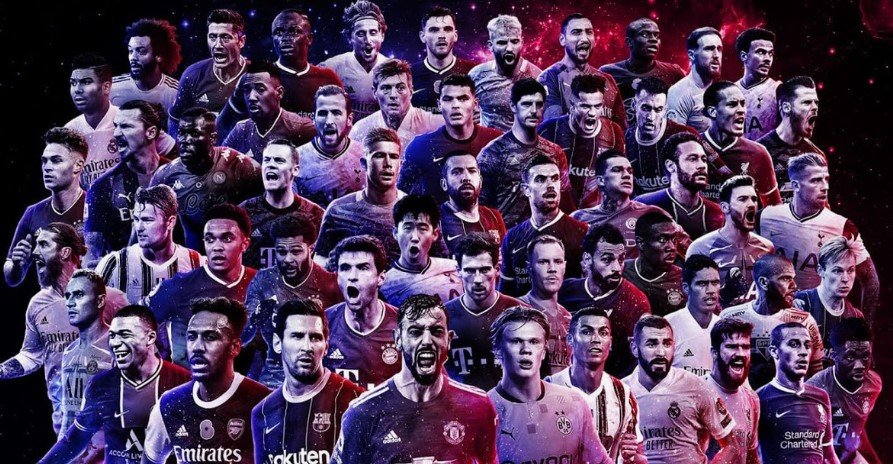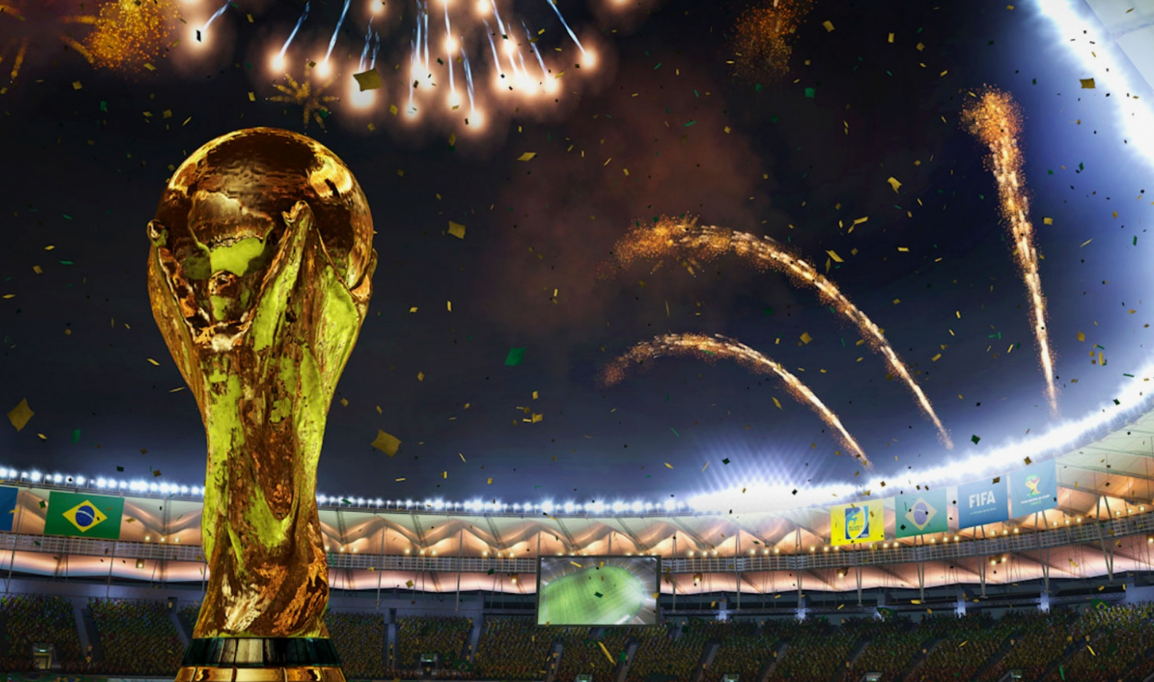FIFPro and Europe’s top leagues clash with FIFA over the soccer calendar. The dispute centers on player workload and scheduling conflicts.
The ongoing battle between FIFPro, Europe’s major leagues, and FIFA highlights a critical issue in professional soccer. As the sport grows, managing the calendar becomes increasingly complex. Players face demanding schedules, risking injury and burnout. Clubs and national teams often prioritize different competitions, leading to scheduling conflicts.
The tension escalates as stakeholders push for a calendar that balances player welfare with commercial interests. This dispute affects not only players but also fans and the overall integrity of the sport. Understanding these dynamics is essential for anyone invested in the future of soccer.
Fifpro’s Role in Europe’s Big Leagues
FIFPro plays a crucial role in shaping soccer’s future, especially in the ongoing battle between Europe’s big leagues and FIFA. This organization represents professional players worldwide. FIFPro aims to protect players’ rights, ensuring their voices are heard in discussions about the sport’s calendar. As the fight over scheduling intensifies, understanding FIFPro’s role becomes vital.
Player Representation
FIFPro focuses on representing professional players across the globe. It unites players from various leagues, creating a strong voice in soccer. This representation is essential for several reasons:
- Protection of Rights: FIFPro defends players against unfair practices.
- Negotiation Power: A collective voice strengthens negotiations with clubs and federations.
- Health and Safety: FIFPro advocates for player welfare, emphasizing the need for rest periods.
FIFPro also engages with leagues and associations to ensure player interests are prioritized. For instance, they work to:
- Ensure fair contracts.
- Promote mental health resources.
- Support educational programs for players.
This representation is crucial in the battle over soccer’s calendar. Players need a balanced schedule to perform at their best.
Advocacy Efforts
FIFPro’s advocacy efforts are vital in the ongoing calendar dispute. They lobby for players’ rights at every level of the sport. Their efforts include:
- Policy Making: FIFPro influences decision-makers in soccer governance.
- Awareness Campaigns: They raise awareness about the impacts of over-scheduling.
- Research and Reports: FIFPro publishes studies on player workloads and injuries.
FIFPro regularly collaborates with other organizations to strengthen their message. They aim to:
| Collaboration Type | Goal |
|---|---|
| Leagues | Establish fair game schedules. |
| FIFA | Advocate for player-friendly policies. |
| Health Organizations | Promote player health initiatives. |
These advocacy efforts aim to ensure players enjoy a sustainable and healthy career. FIFPro continues to fight for their rights in this complex battle.
FIFPro, Europe’s big leagues vs. FIFA

Fifa’s Influence
The ongoing clash between FIFPro, Europe’s top leagues, and FIFA shapes soccer’s future. FIFA’s influence is a key factor in this battle. It controls the international calendar, affecting clubs and players. Understanding this influence helps fans grasp why changes happen in soccer.
Global Governance
FIFA serves as the global governing body for soccer. It makes decisions that impact all levels of the game. This includes international matches, tournaments, and player regulations. FIFA’s decisions often prioritize the global stage over local leagues. Here are some key points about FIFA’s governance:
- International Matches: FIFA schedules matches that disrupt league play.
- Tournament Dates: FIFA controls when major tournaments occur.
- Player Transfers: FIFA regulates transfer windows, affecting team strategies.
FIFA also collaborates with confederations like UEFA. This can lead to tensions with leagues. For example, FIFA’s World Cup date changes can clash with league schedules. This creates stress for clubs and players alike.
Here’s a table showing FIFA’s major tournaments and their impact on league calendars:
| Tournament | Date | Impact on Leagues |
|---|---|---|
| World Cup | Every 4 Years | Interrupts domestic leagues for a month |
| FIFA Club World Cup | Annual | Disrupts league play for participating teams |
| International Friendlies | Various | Can lead to player absences during league matches |
Impact On Leagues
FIFA’s influence significantly affects domestic leagues across Europe. Clubs must adjust their schedules to accommodate FIFA events. This can lead to player fatigue and injuries. Clubs often lose star players to national teams during crucial matches. The impact is evident in several ways:
- Player Availability: Key players are often away for international duty.
- Scheduling Conflicts: Leagues must change match dates to fit FIFA’s calendar.
- Financial Strain: Clubs face potential revenue loss during international breaks.
Many leagues express frustration over FIFA’s decisions. They argue that FIFA prioritizes its interests over local competitions. This leads to tension between clubs and the governing body. Here’s a list of some affected leagues:
- Premier League
- La Liga
- Bundesliga
- Serie A
These leagues struggle to balance their schedules while complying with FIFA’s demands. The ongoing battle over the soccer calendar continues to shape the game.
European Leagues Overview
The battle between FIFPro, Europe’s big leagues, and FIFA revolves around the soccer calendar. This conflict affects players, clubs, and fans. The European leagues play a significant role in shaping the game. Understanding these leagues helps us grasp the ongoing struggle over scheduling and competition formats.
Major Competitions
European leagues host some of the most exciting soccer tournaments in the world. These leagues feature top teams and players, drawing millions of fans. Here are some key competitions:
- English Premier League: Known for its intense matches and global fanbase.
- La Liga: Home to legendary teams like Barcelona and Real Madrid.
- Bundesliga: Famous for its high-scoring games and passionate supporters.
- Serie A: Features tactical play and historic clubs like Juventus and AC Milan.
- Ligue 1: Showcases rising talents and strong teams like Paris Saint-Germain.
These leagues have different formats, but they share one common goal: delivering thrilling soccer. The table below highlights their key features:
| League | Country | Founded | Number of Teams |
|---|---|---|---|
| English Premier League | England | 1992 | 20 |
| La Liga | Spain | 1929 | 20 |
| Bundesliga | Germany | 1963 | 18 |
| Serie A | Italy | 1898 | 20 |
| Ligue 1 | France | 1933 | 20 |
Each league brings its own flavor to soccer. Fans eagerly await matches every week, adding to the excitement.
Scheduling Challenges
Scheduling matches poses significant challenges for European leagues. The overlapping calendars of domestic and international competitions create confusion. Here are some factors that complicate scheduling:
- International Breaks: Players often leave for national teams, disrupting club matches.
- European Tournaments: Clubs participating in UEFA competitions face packed schedules.
- Player Welfare: Long seasons can lead to injuries and fatigue.
Managing these challenges requires careful planning. Clubs and leagues must coordinate to ensure smooth operations. Here are some key considerations:
- Determine match dates well in advance.
- Communicate effectively with national teams.
- Prioritize player health and recovery.
Finding a balance between club commitments and international duties remains crucial. The ongoing battle over the soccer calendar highlights the need for cooperation among all parties involved.
Calendar Conflicts
FIFPro, Europe’s big leagues, and FIFA are in a tug-of-war over soccer’s calendar. Calendar conflicts are at the heart of this battle. Different agendas create tension between international matches and club commitments. Understanding these conflicts is crucial for fans and players alike.
International Matches
International matches are a key aspect of soccer. They allow countries to compete and showcase talent. However, these matches can clash with club schedules. This leads to frustration among clubs and players.
- FIFA International Match Calendar: FIFA sets specific dates for international games.
- National Team Duties: Players are called up to represent their countries.
- Impact on Clubs: Clubs lose key players during these periods.
Here is a table showing the typical international match windows:
| Month | International Matches |
|---|---|
| March | Friendlies and Qualifiers |
| June | Continental Tournaments |
| September | Qualifying Rounds |
| November | Friendlies and Qualifiers |
These windows can disrupt club seasons. Clubs often face scheduling headaches. Missing top players can lead to poor performance and lost points.
Club Commitments
Club commitments are another important factor. Clubs invest heavily in players. They want their stars available for every match. The clash with international fixtures creates serious problems.
- League Matches: Clubs have a busy schedule of league games.
- Cup Competitions: Clubs also compete in various domestic cups.
- Player Fatigue: A packed calendar can exhaust players.
Here’s a look at a typical club season:
| Month | Club Activities |
|---|---|
| August | Season Kick-off |
| December | Festive Fixtures |
| April | End of Regular Season |
Clubs must balance player welfare with their ambitions. This ongoing conflict raises questions about player rights and the integrity of the game.
Player Welfare Issues
FIFPro, Europe’s big leagues, and FIFA are in a fierce battle over soccer’s calendar. This conflict raises significant player welfare issues. Players face intense schedules that can lead to fatigue and injuries. The impact on their mental health is also a major concern. Understanding these issues is crucial for the future of soccer.
Fatigue And Injuries
Many players experience extreme fatigue due to packed schedules. They play numerous matches over short periods. This can lead to serious injuries that affect their careers. Injuries not only impact players but also the teams and fans.
Key factors contributing to fatigue and injuries include:
- High number of matches each season
- Traveling long distances for games
- Lack of recovery time between matches
| Injury Type | Cause | Impact |
|---|---|---|
| Muscle Strains | Overexertion | Missed games, longer recovery |
| Joint Injuries | Repetitive stress | Potential career-ending |
| Fatigue-related Injuries | Lack of rest | Increased risk of accidents |
Players need proper rest and recovery. Clubs must prioritize their health to avoid long-term damage. Without these measures, player performance may suffer, affecting the sport as a whole.
Mental Health Concerns
Mental health is a critical issue in soccer. Players face enormous pressure to perform well. The fear of failure can lead to anxiety and stress. These mental challenges often go unnoticed.
Common mental health issues among players include:
- Depression
- Anxiety
- Burnout
Some factors that contribute to mental health concerns are:
- High expectations from fans and media
- Constant scrutiny of performance
- Isolation during intense training
Clubs and organizations must provide support systems. Access to mental health professionals is essential. Regular check-ins can help players cope with pressure. A supportive environment can lead to healthier, happier athletes.

Financial Implications
The battle between FIFPro, Europe’s big leagues, and FIFA over soccer’s calendar has significant financial implications. This conflict affects how money flows into the game. Understanding these financial aspects helps fans grasp the bigger picture of soccer’s ecosystem. Both sides have strong interests, and the outcomes can change the landscape of soccer forever.
Revenue Streams
Revenue streams in soccer are vital for clubs and players. Different sources contribute to the financial health of the sport. Here are some main revenue sources:
- Matchday Revenue: Ticket sales and merchandise sold at games.
- Sponsorship Deals: Companies pay to have their names linked to teams.
- Player Transfers: Selling players can bring in large sums.
- Prize Money: Winning tournaments rewards clubs financially.
Each of these streams plays a crucial role in a club’s budget. The table below shows an example of revenue sources for a typical European club:
| Revenue Source | Annual Revenue (€) |
|---|---|
| Matchday Revenue | 30 million |
| Sponsorship Deals | 25 million |
| Player Transfers | 20 million |
| Prize Money | 15 million |
These revenue streams show the importance of financial planning. The ongoing dispute over the soccer calendar can affect these revenues. Clubs worry that changes might reduce their income.
Broadcasting Rights
Broadcasting rights are essential for generating income in soccer. Television networks pay large sums to air games. These rights create a huge revenue stream for leagues and clubs. The more games a league has, the higher the revenue potential.
- International Broadcasting: Selling rights to networks around the world.
- Domestic Broadcasting: Local networks pay to show games in a specific country.
- Streaming Services: New platforms are emerging, changing how fans watch games.
The table below outlines broadcasting revenue examples:
| League | Annual Broadcasting Revenue (€) |
|---|---|
| Premier League | 3 billion |
| La Liga | 1.5 billion |
| Bundesliga | 1 billion |
Broadcasting rights impact every club’s financial strategy. Changes in the soccer calendar could lead to less visibility for some leagues. This reduction might decrease their broadcasting revenues significantly.
Negotiation Tactics
The battle over soccer’s calendar involves complex negotiations between FIFPro, Europe’s big leagues, and FIFA. Each party has its own goals and tactics. Understanding these negotiation tactics reveals the power dynamics in soccer. This situation affects players, clubs, and fans alike.
Fifpro Strategies
FIFPro represents professional soccer players worldwide. Their main goal is to protect players’ rights. They use several effective strategies in negotiations. Here are some key tactics:
- Advocacy for Player Welfare: FIFPro focuses on reducing player fatigue. They argue for fewer matches and better rest periods.
- Data-Driven Arguments: They present studies showing how fatigue affects performance. This data strengthens their position.
- Building Alliances: FIFPro collaborates with other organizations. They join forces with players’ unions across Europe.
- Public Campaigns: FIFPro uses media to raise awareness. They highlight the issues players face, gaining public support.
These strategies help FIFPro create a strong case. They aim to influence FIFA and league decisions. This approach keeps players’ needs at the forefront.
League Responses
European leagues have their own strategies in this negotiation. They aim to maintain control over their schedules. Here are some common responses:
- Financial Concerns: Leagues worry about lost revenue from fewer matches. They often prioritize income over player welfare.
- Player Rotation Policies: Many leagues implement rotation strategies. This helps manage player fatigue during busy schedules.
- Engagement with Fans: Leagues emphasize the importance of fan attendance. They argue that fewer matches could harm fan interest.
- Negotiating with FIFA: Leagues negotiate directly with FIFA. They seek compromises that favor their interests.
These responses show how leagues defend their positions. They balance player welfare with financial needs. The ongoing negotiations will shape the future of soccer.

Future Of Soccer’s Calendar
The future of soccer’s calendar is a hot topic in the world of football. With FIFPro, Europe’s big leagues, and FIFA at odds, changes are on the horizon. The calendar affects players, clubs, and fans. Understanding the potential shifts helps everyone prepare for what’s next.
Proposed Solutions
Various solutions are being discussed to tackle the issues surrounding soccer’s calendar. These solutions aim to balance the needs of players, clubs, and fans while ensuring the sport’s growth.
- Extended Off-Season: A longer break for players can prevent injuries and burnout.
- Flexible Match Scheduling: Adjusting match dates based on international events can ease conflicts.
- Unified Calendar: Creating a single calendar for all leagues could streamline schedules.
| Proposed Solution | Benefits |
|---|---|
| Extended Off-Season | Reduces player fatigue and improves performance. |
| Flexible Match Scheduling | Minimizes clashes with international matches. |
| Unified Calendar | Provides clarity for fans and reduces confusion. |
Each solution has its challenges. Implementing these ideas requires cooperation from all parties involved. Finding common ground is crucial for a smoother soccer experience.
Long-term Predictions
Looking ahead, several trends could shape the future of soccer’s calendar. These predictions are based on current discussions and evolving needs.
- Increased Player Welfare: Future calendars may prioritize player health and well-being.
- Globalization of Soccer: More international matches could lead to a shift in scheduling norms.
- Technology Integration: Advanced tools may help streamline scheduling processes.
Experts believe that changes in soccer’s calendar will lead to:
- Better performance from players due to reduced fatigue.
- More engagement from fans with clearer match schedules.
- Greater harmony among leagues and governing bodies.
Ultimately, the future of soccer’s calendar hinges on collaboration and communication. The sport must evolve to keep up with the demands of modern football.
Conclusion
The ongoing battle between FIFPro, Europe’s leagues, and FIFA highlights the complexities of soccer’s calendar. Each side seeks to protect its interests while ensuring the sport thrives. As negotiations continue, fans and players alike await a resolution that balances competitive integrity and player welfare.





1 COMMENTS
Comments are closed.